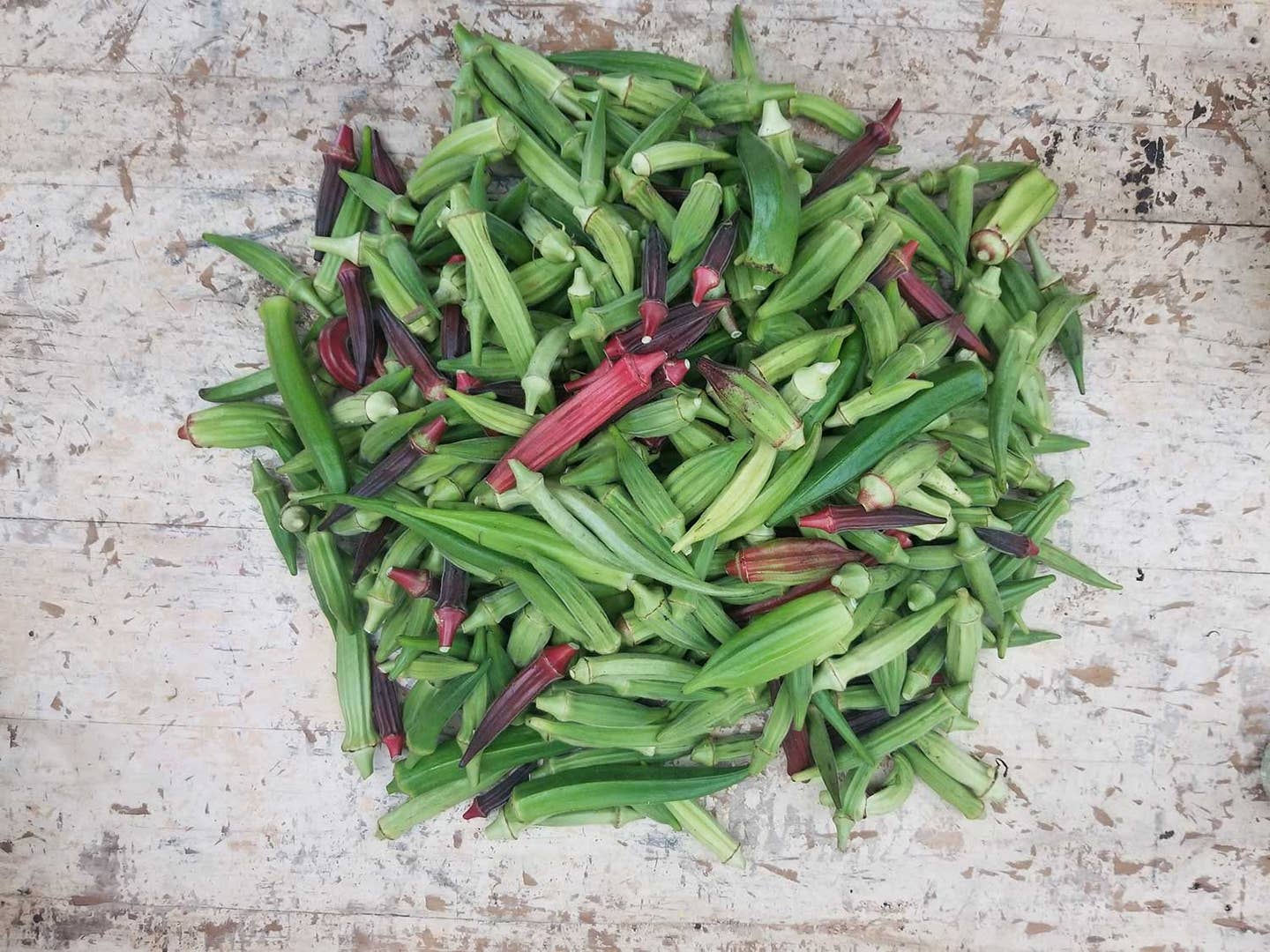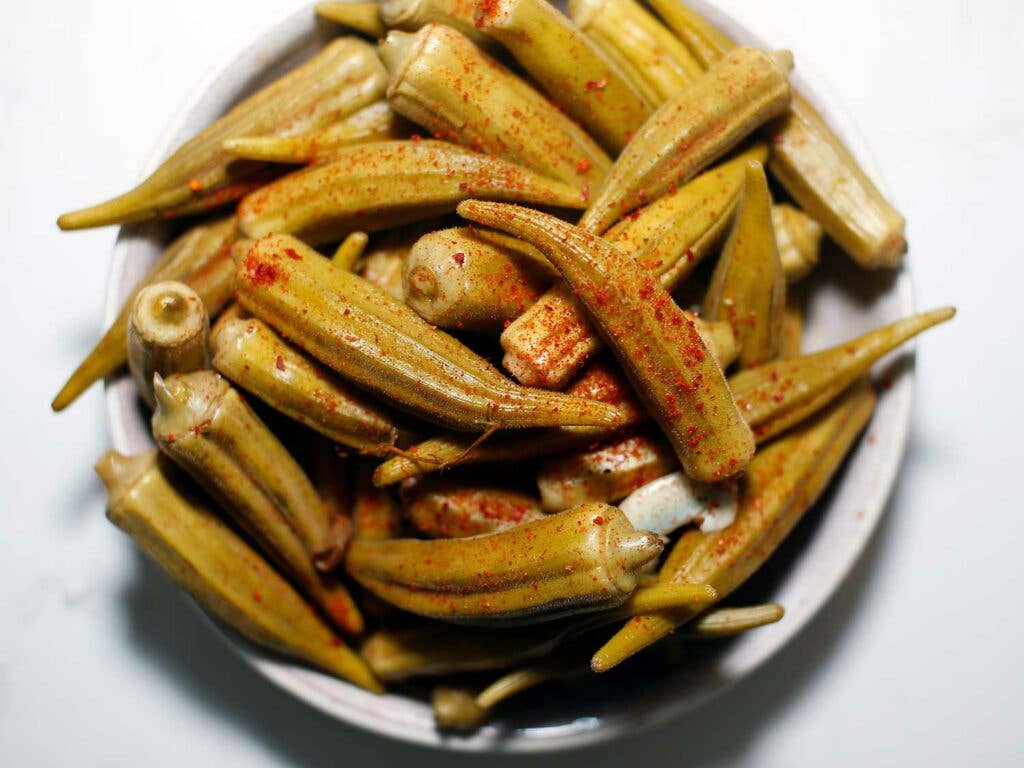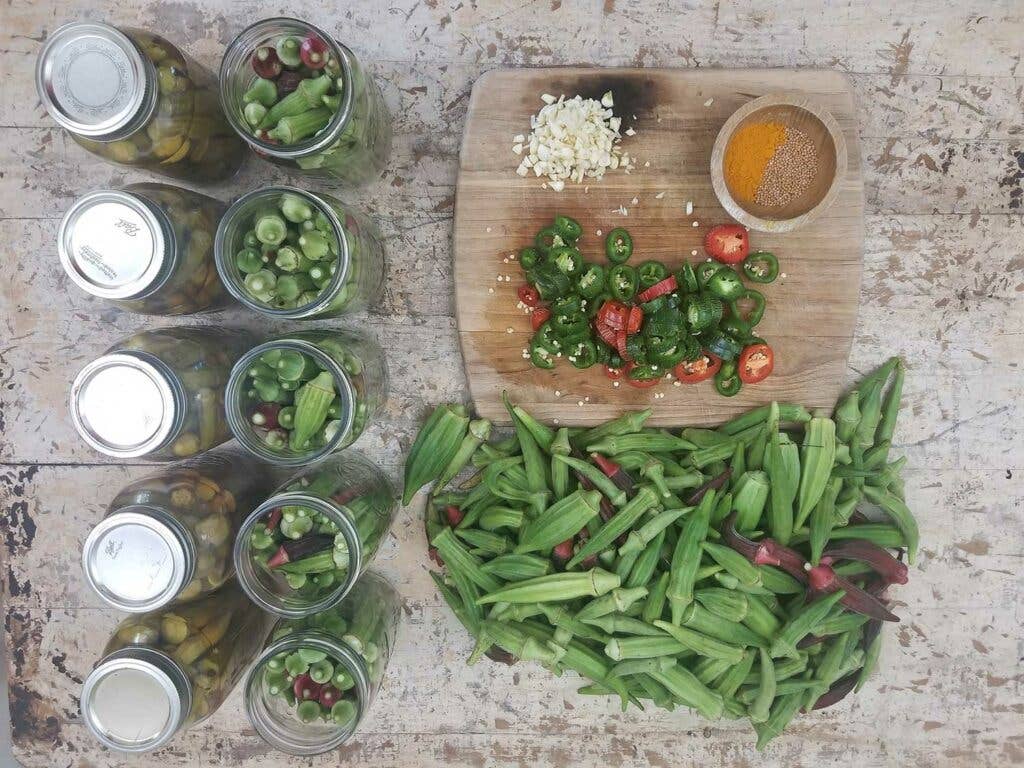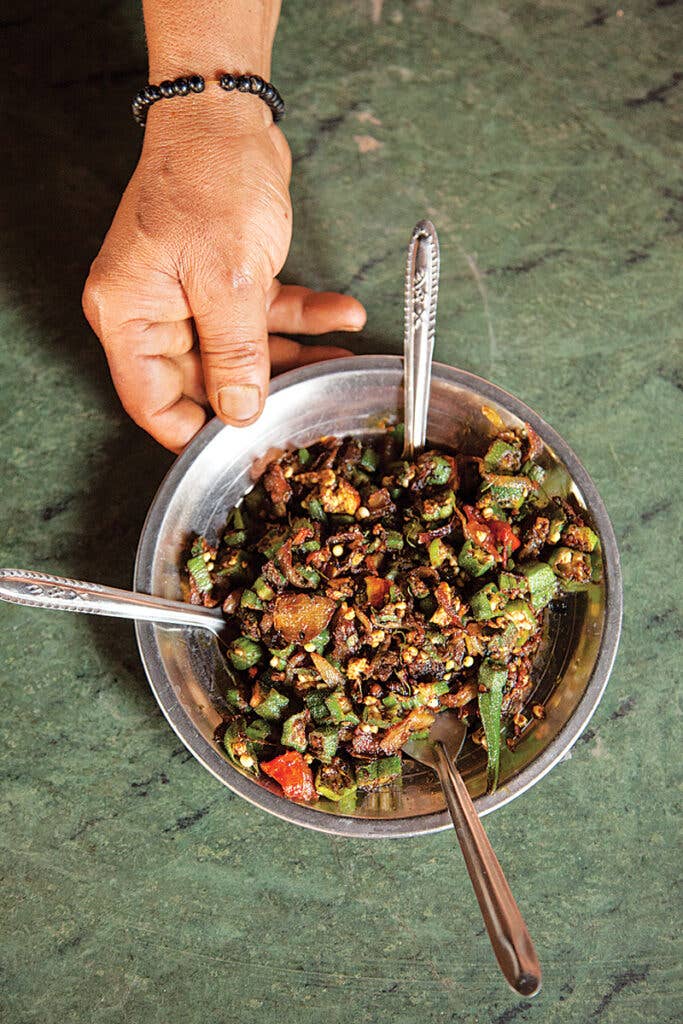
The Proper Way to Cook Okra, According to an Okra Obsessive
“The Whole Okra” author Chris Smith on how to make the most of this underrated vegetable
The international depth of culinary okra is astounding. Okra pods are grown and eaten across India and Southeast Asia, Australia, Africa, the Middle East and Mediterranean Europe, South and Central America, and the southern United States. Each locale has their culinary traditions and recipes. Statistics from the Food and Agriculture Organization of the United Nations show that India produces dramatically more okra than any other country, over 6 million tons in 2014, followed by Nigeria producing 2 million. Third in line is Sudan producing just shy of 300,000 tons. The United States limps over the finish line in 21st position, producing just under 10,000 tons in 2014. In 2017 the U.S. imported almost 50,000 tons of okra, both fresh and frozen, most of which came from Mexico, Honduras, and the rest of Central America.

While the South has always, in general, embraced okra, some regions of the country are largely unaware of it. And even in the South, most cooks don't stray beyond a handful of common recipes. Which is a shame because okra is so versatile: You can pickle, ferment, and dehydrate it—these are all technically ways to eat okra raw. You can fry, boil, bake, grill, and steam it. You can slice, mash, julienne, and dice it. You can bread, batter, marinate, and season it. You can curry, casserole, stir-fry, and stew it.
But somehow, it always comes back to slime. A 1905 USDA Farmers’ Bulletin states, “Okra when cooked in water or in a mixture with liquid may develop a mucilaginous consistency, which many persons especially like in this vegetable.” However, by 1949 the principal horticulturist of the USDA, Victor R. Boswell, assessed that “okra alone is generally considered too ‘gooey,’ or mucilaginous, to suit American tastes.” In 1951 the same Victor R. Boswell authored an updated USDA Farmers’ Bulletin on okra; note the significant shift in tone from the 1905 edition: “When cooked ‘straight’ its mucilaginous properties do not suit most people.” In a 1974 USDA survey, adults named okra as one of the three vegetables they liked least, and children rated it with the four they liked second least, citing the texture as being undesirable. And more recently, in 2007, AOL conducted an online survey of America’s most hated foods and okra ranked sixth. In the span of a century, okra has gone from “especially liked” to “most hated.”

I recently stumbled across a forgotten jar of fermented okra pods in my basement. They had been down there for an entire year, and all the okra stereotypes existed in this jar to the power of 10. My discovery of that jar happened to coincide with reading Jessica Harris's The Africa Cookbook, in which she encourages okra eaters to embrace the slime. As I pulled a chunk of gooey okra from the jar, the slime stretched out like the "danglies" we used to spit onto the ceilings at school, watching them drip down and hoping they'd land on some innocent's head. Embrace the slime, I thought. Oysters are slimy and people pay good money to slurp those snot-balls from their shells, so why not 365-day fermented okra? For research, I thought. And gulped it down. It tasted good, maybe even great. The chile pepper that had also spent a year in the jar, and the traditional spice mix of mustard and peppercorns, had all created a delicious homogeneous flavor.
I’m not asking you to eat 365-day fermented okra (you can build up to that), but I am asking you to reframe the way you think about the slimy-okra cliché. First, because there are probably slimy things that you like to eat (be honest), so why single out okra? Second, because there are so many ways to eat okra without it being slimy: Y’all just don’t know how to cook it properly. I believe there is an okra out there for everyone. Eating okra raw wins over a lot of people, for example—there is a grassy sweetness to the pods, and the satisfying feeling of healthiness and well-being from consuming something crunchy and green. When it comes to cooking the pods, there are three main themes behind the myriad preparations: pairing with acid, high-heat cooking, and diluting with water.

Okra Plus Acid
Add any acid when cooking okra—tomatoes, lemon juice, or vinegar—and you’ll end up with a less slimy dish. This means cooking okra can be as simple and delicious as throwing some okra pods and chopped tomatoes in a roasting pan with a little salt and pepper or Cajun seasoning and baking it all on medium-high for 30 to 40 minutes.
The pairing of okra and tomatoes is a useful combination in the kitchen because, as summer crops, they produce in abundance at around the same time (July and August are peak production times in the Southeast). This is reflected in the panoply of okra-tomato recipes you'll find if you start looking: stewed okra and tomatoes; okra and tomato soup; sautéed okra and tomatoes; gumbo; succotash; roasted okra and tomatoes; Southern ratatouille; Brunswick stew; and so on.
The trend is also reflected in most okra-eating regions. In the Middle East we see meat (often beef) and bamia stewed with tomatoes; India has bhindi masala, tomato bhindi sabzi, and a whole host of okra-tomato variations; a West African gombo sauce is basically just okra, tomatoes, and chiles; ginisang okra from the Philippines is sautéed okra with pork, but includes tomatoes; Zeytinyağlı bamya is a Turkish dish that is okra in olive oil with onions and tomatoes and peppers; and the list goes on. The combination is based on more than just commonality of seasons, though—you won't find recipe after recipe pairing okra and zucchini. The secret is that the acidity of the tomatoes cuts through the mucilage.

Okra Plus Water
Everything about okra is slime this and slime that until we get to gumbo. As soon as the topic of gumbo comes up, there is a switch in terminology and suddenly we're praising okra's magical thickening effect. A quick look at gumbo recipes shows a wide variety of versions and ingredients being employed, including meats, seafood, and thickeners. Okra doesn't even need to be included for a dish to be called gumbo. In New Orleans Cuisine contributor Cynthia LeJeune Nobles wrote, "Today's purists still insist that there are only two types of gumbo, okra and filé—period. Those desiring more nuances classify it into three broad categories, Creole gumbo, Cajun gumbo, and gumbo z'herbes, then subcategorize it into gumbo fevis (okra gumbo), gumbo filé, or plain roux gumbo, and then break it down at least a dozen times more according to the main ingredients." That purist definition of fevi gumbo is reflected in writing as far back as 1788. Fevi is a Creole term for "okra" or "okra gumbo." Today the use of okra is still a distinguishing part of modern gumbo dishes.
Stuffed Okra
This recipe, from Madhur Jaffrey’s A Taste of India, is part of SAVEUR’s November 2017 cookbook club. Though we’ve tested this recipe in the SAVEUR test kitchen, we present it in its original, unedited form from the book. Get the recipe for Stuffed Okra »
Okra Plus Heat
According to my research, grilled okra comes up as the number one okra converter. Take medium-sized whole pods, brush with a little olive oil, and sprinkle with salt, pepper, or some Cajun seasoning. Grill on high heat until the pods begin to brown on each side and serve hot with a generous squeeze of fresh lime. Throw in a spicy mayonnaise dip and these tender, no-slime pods will have people questioning their anti-okra convictions. The light charring brings out the underlying sweetness of the pods, and the lime really takes this dish from good to awesome. I think that’s in part due to the pairing of flavors, but the acidity of the lime may also balance out some of the residual slimy textures. On top of all those flavors is the slime-reducing nature of high-heat preparations.
Meanwhile, there are many who will tell you that the only way to eat okra is fried. It is certainly the way many people are introduced to okra, probably as a side at barbecue joints or Southern diners. Perhaps as part of a family tradition in summer, when okra is podding in the garden or the farmers' markets start selling. Pre-breaded frozen okra ready for dumping in the fryer is available year-round.
There are many ways to fry okra, but when people talk about fried okra they speak to a certain preparation of sliced pods rolled in meal and deep-fried. Within that description there are still many variations and nuances and family recipes and my grandmother makes the best…One person I spoke to told me their family recipe was two parts cornmeal and one part flour, as passed down from their great-grandmother who was born in 1863. In 1857 The Southern Planter journal offered this advice: "Okra is very good fried. Cut into thin slices and fry in lard or butter." You can't get much simpler than that!
This excerpt is adapted from Chris Smith’s book The Whole Okra: A Seed to Stem Celebration (Chelsea Green Publishing, June 2019) and is reprinted with permission from the publisher.
Keep Reading
Continue to Next Story










